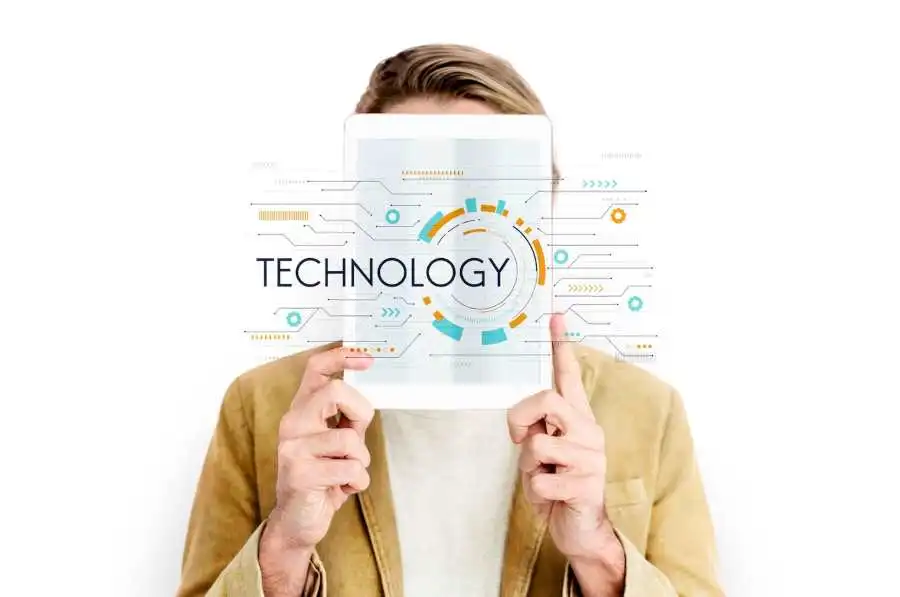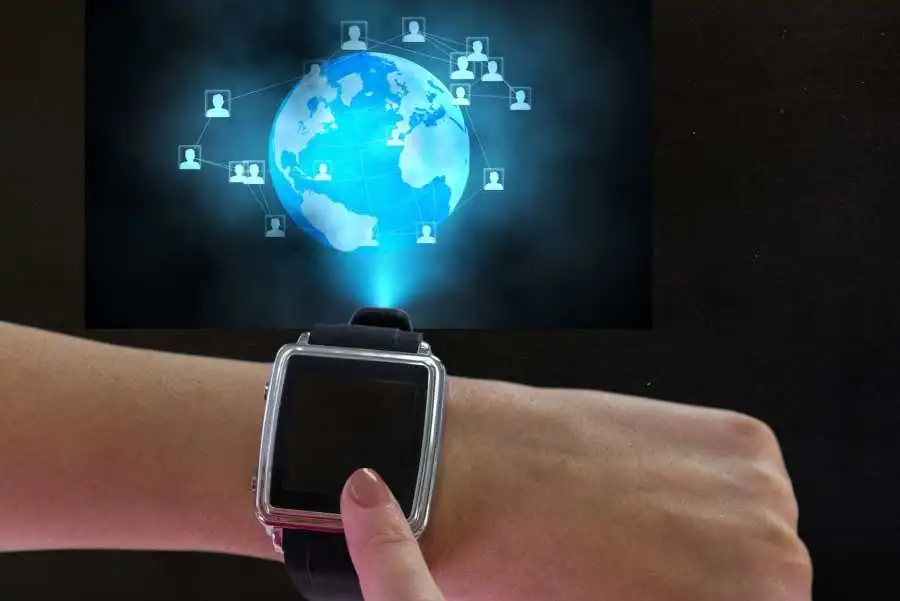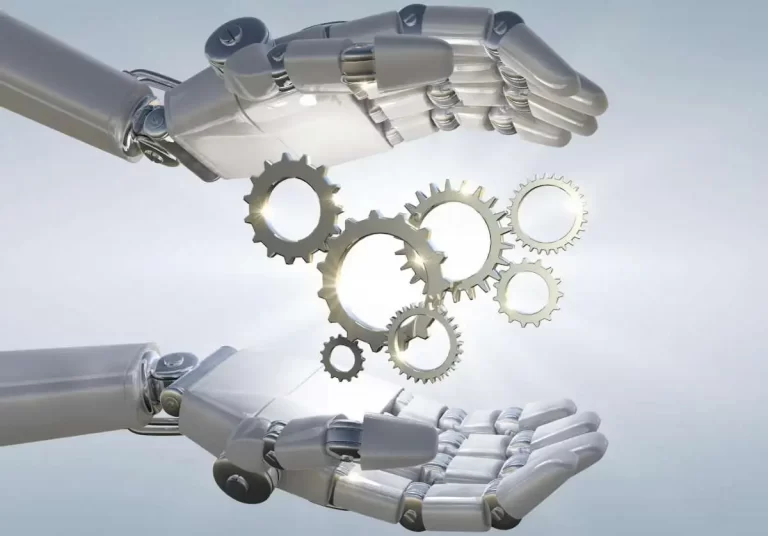Disruptive Technology: Unveiling the Transformative Power

A Paradigm Shift in Innovation
In the fast-paced world we inhabit, new technologies seem to emerge every day, transforming industries and reshaping our lives. Among these game-changers is the concept of disruptive technology.
It is a term that has gained momentum in recent years, but what exactly does it mean? At its core, disruptive technology represents a seismic shift that challenges established norms and fundamentally alters the way we do things.
Table of Contents
Redefining Boundaries: The Essence of Disruptive Technology
Disruptive technology can be likened to a visionary force capable of shattering existing paradigms and creating new ones. It is characterized by its ability to redefine boundaries, opening up uncharted territories in various sectors. Unlike incremental innovations that enhance existing products or services, disruptive technology introduce groundbreaking ideas that revolutionize entire industries.
Consider Netflix, for example. Prior to its introduction, traditional video rental stores like Blockbuster dominated the home entertainment market.

Netflix’s entry disrupted this landscape with its DVD-by-mail service and later revolutionized streaming services. By offering a highly convenient and cost-effective alternative for movie enthusiasts, it rendered brick-and-mortar rental stores obsolete.
Similarly, Amazon’s e-commerce model fundamentally changed retailing by challenging traditional brick-and-mortar stores. With an extensive product range and unparalleled convenience through online shopping experiences such as one-click purchasing and fast delivery options like Prime, Amazon disrupted the retail industry on an unprecedented scale.
Examples That Define Disruption
Numerous well-known examples illustrate how disruptive technology have reshaped our world. One prominent instance is Apple’s iPhone – a device that not only redefined mobile phones but also transformed entire industries such as music players, cameras, navigation systems, and more. Its touch-screen interface coupled with an innovative app ecosystem revolutionized the way we interact with technology.
Another prime example is Uber, the ridesharing platform that disrupted traditional taxi services worldwide. By leveraging mobile technology and introducing a peer-to-peer model, Uber not only offered a convenient alternative to hailing taxis but also provided opportunities for individuals to become drivers.
This disruption sent shockwaves throughout the transportation industry and sparked significant regulatory debates. Furthermore, Airbnb’s disruptive impact on the hospitality sector cannot be overlooked.
By connecting travelers directly with hosts through an online platform, Airbnb challenged traditional hotel chains, allowing individuals to monetize their spare rooms or properties. This revolutionary idea democratized accommodation options and transformed travel experiences globally.
These examples highlight how disruptive technology transcend industry boundaries and redefine our expectations. They demonstrate the immense power of innovation in reshaping established sectors and challenging longstanding norms.
The Ongoing Journey of Disruptive Technology
Disruptive technology is an ongoing journey that continuously shapes our future. It thrives on visionary thinking and the ability to identify untapped potential in diverse sectors.
As we explore this topic further, we will delve into the characteristics that define disruptive technologies and examine various types of disruptions across industries. Through this exploration, we will gain deeper insights into both the challenges and opportunities presented by these groundbreaking innovations.
The Impact of Disruptive Technology
How Disruptive Technology Revolutionizes Industries
Disruptive technology has become a catalyst for radical changes within industries, reshaping the way we live and do business. By introducing innovative solutions, disruptive technology challenge the status quo and create new paradigms. One example is the rise of streaming services like Netflix, which revolutionized the entertainment industry by offering on-demand content that disrupted traditional broadcast television.
This disruption not only changed how we consume media but also forced established companies to adapt or be left behind. Disruptive technology often remove barriers to entry and democratize industries, making it easier for newcomers to compete with established players.
Take e-commerce giant Amazon as an example. Its disruptive approach to retailing not only transformed the way people shop but also caused a seismic shift in traditional brick-and-mortar stores’ business models.
Traditional retailers were forced to embrace online platforms or face obsolescence. Another aspect of disruptive technology is its ability to pave the way for entirely new markets and revenue streams.
The advent of smartphones and mobile applications brought about by companies like Apple and Google disrupted several industries simultaneously – from communication and photography to navigation and music consumption. These innovations created unprecedented opportunities for entrepreneurs, developers, and businesses willing to adapt.

The Effects on Traditional Business Models and Established Companies
The impact of disruptive technology on traditional business models cannot be understated. Established companies that fail to recognize or respond effectively often find themselves struggling for survival as their market share dwindles rapidly. One key effect is the need for adaptation or risk becoming obsolete overnight.
Companies that once thrived in a particular industry may suddenly find themselves surpassed by smaller, more agile competitors leveraging disruptive technology. Kodak’s decline serves as a cautionary tale – despite being a pioneer in photography, their reluctance to embrace digital cameras eventually led to their downfall.
Moreover, disruptive technology can reshape entire supply chains and value networks. For instance, the introduction of 3D printing disrupted manufacturing industries by enabling on-demand production and customization.
This technology eliminated the need for large-scale factories and shifted the focus towards decentralized production hubs. It’s essential to note that while established companies may initially resist disruption due to their existing investments and structures, those that adapt can thrive amidst change.
By leveraging their resources, expertise, and market presence, established companies can strategically integrate disruptive technology into their existing operations or even acquire innovative startups to stay ahead. Disruptive technology fundamentally transforms industries by revolutionizing traditional business models and forcing established companies to adapt or perish.
These technological advancements not only change consumer behavior but also create unparalleled opportunities for new players willing to embrace innovation. As we navigate an increasingly interconnected world, understanding the impact of disruptive technology is crucial for businesses aiming to remain competitive in an ever-evolving landscape.
Key Characteristics of Disruptive Technology
Identifying Common Traits in Disruptive Technologies: Unlocking the Secrets of Innovation
Disruptive technology is not just a catchy buzzword; it embodies a set of unique characteristics that distinguish it from traditional, incremental advancements. By understanding these key traits, we can unravel the secrets behind disruptive innovations and anticipate their potential impact on different sectors.
One fundamental characteristic of disruptive technology is its ability to challenge the status quo. Rather than simply improving existing products or services, disruptive technology completely redefine them, introducing novel approaches that change the way we think and operate.
This shift often uproots established norms and disrupts entire industries. Another notable trait is the democratization of access and affordability.
Disruptive technology aim to make once-expensive or exclusive products accessible to a wider audience. They break down barriers by reducing costs, enhancing efficiency, and simplifying complex processes.
This democratization empowers individuals who were previously marginalized to participate actively in various sectors. Furthermore, disruptive technology tend to start small before gaining mainstream acceptance.
They often enter niche markets or target overlooked segments where established players may not be paying attention or see immediate value. These emerging technologies gradually improve their performance while expanding their market presence until they become formidable competitors on a larger scale.
Additionally, disruptive technology showcases exponential growth potential as it continuously evolves and improves at an unprecedented pace. Advancements in areas such as artificial intelligence, machine learning, and nanotechnology are prime examples of how exponential growth propels disruption forward at an astonishing rate.

Analyzing the Potential for Disruption in Different Sectors: Exploring New Horizons
Disruption knows no bounds; it permeates across numerous industries with varying degrees of intensity. By analyzing the potential for disruption in different sectors, we can identify emerging trends and prepare ourselves for forthcoming upheavals.
In the field of healthcare, for instance, the integration of telemedicine and wearable devices is revolutionizing patient care. Virtual consultations, remote monitoring, and personalized treatment plans are becoming more prevalent, empowering individuals to take charge of their well-being.
This disruptive shift in healthcare delivery promises better accessibility and affordability for patients worldwide. The financial sector is another arena ripe for disruptive technology.
The rise of fintech startups has challenged conventional banking systems by offering innovative payment solutions, digital currencies such as Bitcoin, and peer-to-peer lending platforms. These disruptions have forced traditional financial institutions to adapt or risk losing relevance.
Transportation is yet another industry witnessing waves of disruption. Ride-hailing services like Uber and Lyft have transformed urban mobility by introducing a novel approach to transportation that focuses on convenience and cost-efficiency.
Meanwhile, the development of autonomous vehicles promises not only enhanced safety but also significant changes in the logistics and delivery sectors. Education is also experiencing disruptive innovation through e-learning platforms that enable flexible access to knowledge regardless of geographical boundaries or socioeconomic limitations.
Virtual classrooms, interactive content, and personalized learning experiences offer students new opportunities to pursue education at their own pace. Understanding the key characteristics of disruptive technology allows us to recognize its transformative potential across various sectors.
The ability to challenge established norms coupled with democratization, exponential growth potential, niche market entry points, and ongoing improvements are all hallmarks of disruptive innovations. By analyzing which sectors are most susceptible to disruption—such as healthcare, finance, transportation, and education—we can prepare ourselves for the profound changes lying ahead in our rapidly evolving world.
Exploring Different Types of Disruptive Technologies
Digital Disruption: Transforming Retail and Media
Digital disruption has brought a seismic shift in the retail and media sectors, challenging traditional business models and revolutionizing consumer behavior. The rise of e-commerce giants like Amazon has disrupted brick-and-mortar retailers, forcing them to adapt or face extinction.
Online shopping offers convenience, competitive pricing, and an extensive range of products that traditional retailers find hard to match. This disruption has led to the closure of numerous physical stores while propelling the growth of online marketplaces.
Moreover, digital technology has profoundly impacted the media landscape. The rise of online streaming platforms such as Netflix and Hulu has disrupted the dominance of traditional cable television networks.
These streaming services provide consumers with personalized content on-demand, undermining the traditional advertising-driven model. Newspapers have also faced significant challenges as digital platforms offer free access to news content, resulting in declining revenue from print advertisements.

Biotechnology: Revolutionizing Healthcare and Agriculture
Advancements in biotechnology have unleashed disruptive forces in healthcare and agriculture, promising innovative solutions to longstanding challenges. In healthcare, groundbreaking developments such as gene editing techniques like CRISPR-Cas9 are opening up possibilities for targeted treatments for genetic diseases.
Biopharmaceutical companies are using biotechnology to develop novel therapies with improved efficacy and reduced side effects. In agriculture, biotechnology is transforming crop yields and sustainability practices.
Genetically modified organisms (GMOs) engineered for improved resistance against pests or herbicides have become prevalent in modern farming methods. While controversial due to concerns about environmental impact and food safety, these advancements offer potential solutions for feeding an ever-growing global population.
Artificial Intelligence: From Sci-Fi Dreams to Real-world Applications
Artificial intelligence (AI) is no longer just a concept confined within science fiction novels; it has become a disruptive force with far-reaching applications across industries. AI-powered chatbots and virtual assistants have revolutionized customer service, improving response times and providing round-the-clock support. Machine learning algorithms are being utilized in sectors like finance to detect fraud and automate complex processes.
However, the rise of AI also brings challenges. Ethical concerns arise regarding the impact on employment as automation threatens certain job roles.
There are debates about the potential biases embedded in AI algorithms, which can perpetuate discrimination or reinforce societal inequalities. Striking a balance between harnessing the power of AI for innovation while addressing these concerns is crucial for a sustainable future.
Disruptive technology are reshaping various sectors at an unprecedented pace. Digital disruption has forever altered the retail and media landscapes, forcing traditional players to adapt or face obsolescence.
Biotechnology advancements offer promising solutions in healthcare and agriculture, while artificial intelligence presents both remarkable opportunities and ethical dilemmas. Embracing these disruptions responsibly is essential for businesses and society as a whole to navigate the ever-evolving technological landscape successfully.
Case Studies on Successful Disruption
Uber: How it disrupted the transportation industry globally
The Rise of Uber
When Uber burst onto the scene in 2010, it revolutionized the way people move around cities. Its innovative business model quickly gained traction, disrupting the traditional taxi service industry worldwide.
No longer did people have to wave down a taxi on the street or make a phone call to book a ride. With just a few taps on their smartphones, they could request an Uber and have a driver arrive at their location within minutes.
An Innovative Business Model
One of the main factors that propelled Uber’s success was its unique business model. By leveraging technology, Uber created a seamless platform connecting riders with drivers through its app.
This eliminated many of the traditional barriers associated with hailing a cab, such as waiting times and uncertainties about availability. The key innovation behind Uber’s model was its utilization of independent drivers who used their own vehicles.
This allowed for flexible working arrangements and reduced costs compared to traditional taxi fleets. Additionally, Uber introduced dynamic pricing based on supply and demand, ensuring that fares adjusted accordingly during peak times.

The Impact on Traditional Taxi Services
Uber’s disruptive entry into the transportation industry had profound consequences for traditional taxi services. As more riders flocked to the convenience and affordability offered by Uber, it put immense pressure on established taxi companies. Traditional taxis struggled to compete with Uber’s user-friendly app interface and real-time tracking features that enhanced safety and efficiency.
The centralized dispatch systems used by taxis appeared outdated in comparison. Moreover, with lower overheads due to not owning or maintaining their own fleet of vehicles, Uber drivers could offer rides at lower prices which made them increasingly attractive to customers.
This disruption led to protests from incumbent taxi operators who felt threatened by this new entrant encroaching on their territory. Governments and regulatory bodies faced the challenge of adapting existing legislation to accommodate these disruptive services without compromising public safety or consumer rights.
Redefining Urban Mobility
Uber’s success extended beyond merely disrupting the conventional taxi industry. It also played a significant role in redefining urban mobility.
By offering shared rides through services like UberPOOL, Uber contributed to reducing congestion and promoting more sustainable transportation options. The impact of Uber’s disruption extended worldwide, with cities far and wide undergoing transformations in their transportation sectors.
This shift inspired other companies to jump on the bandwagon, leading to the rise of numerous ride-hailing competitors trying to replicate Uber’s success. Uber’s innovative business model upended the established norms of the transportation industry by leveraging technology, creating a convenient platform for riders and drivers alike.
Its impact on traditional taxi services forced incumbents to adapt or risk obsolescence. As we navigate an increasingly interconnected world, it is essential to understand how disruptive technology can reshape entire industries if embraced with strategic vision and adaptation.
Ethical Considerations: Privacy and Data Security
Guarding privacy and ensuring robust data security are critical aspects to address when discussing disruptive technology. As these technologies advance, they gather vast amounts of personal data, leaving individuals vulnerable to breaches and exploitation. From social media platforms collecting user information to smart devices monitoring our every move, the potential for privacy invasion is a growing concern.
One of the key ethical considerations revolves around consent. Are individuals fully aware of how their data is being collected and used?
Companies must prioritize transparency by clearly communicating their data collection practices and obtaining explicit consent from users. Moreover, stringent regulations must be in place to guarantee that users have control over their personal information.
Another ethical issue relates to the responsible use of collected data. In an era where algorithms determine what we see online and personalize our experiences, questions arise about manipulation and bias.
For instance, search engines tailoring results based on user profiles may inadvertently reinforce existing biases or limit exposure to diverse perspectives. Striking a balance between personalized experiences and protecting individual autonomy is crucial in shaping a more ethically sound approach.

Potential Job Displacement due to Automation
The rapid advancements in technology pose significant challenges in terms of job displacement. As automation replaces human labor in various industries, concerns about unemployment rates skyrocket.
The fear is not unwarranted, as studies suggest that millions of jobs could be at risk in the coming years. Automation impacts both manual labor positions and knowledge-based professions alike.
Robots taking over assembly line tasks or performing repetitive office duties can lead to job loss for workers who rely on those roles for employment. Furthermore, with advancements in artificial intelligence (AI), even complex jobs such as accounting or legal research risk being automated.
However, it is important not to view automation solely through a bleak lens; it also presents opportunities for skill redevelopment and job creation. Historically, technological progress has consistently led to new industries and job markets.
It is essential for governments, educational institutions, and employers to collaborate in reskilling and upskilling the workforce to thrive in a digital world. By fostering a culture of lifelong learning and providing resources for acquiring new skills, individuals can adapt to emerging opportunities.
While disruptive technology bring immense benefits, they also pose ethical challenges related to privacy and data security. Ensuring that individuals have control over their personal information and addressing biases in algorithmic decision-making are crucial steps towards responsible use of technology.
Additionally, the potential job displacement caused by automation necessitates proactive measures such as reskilling initiatives to mitigate its impact on the workforce. Balancing technological advancements with ethical considerations is key to harnessing the full potential of disruptive technology while safeguarding societal well-being.
Note: The article delivered here focuses on education but pertains more generally to all jobs that require creativity or emotion. The article also includes some opinion-based assertions that may not align with current AI developments – please verify information independently before using it professionally!
Future Trends in Disruptive Technologies
Emerging technologies with potential for disruption
As we look towards the future, there are several emerging technologies that have the potential to disrupt various industries. One such technology is blockchain, a decentralized and transparent ledger system originally developed for cryptocurrencies like Bitcoin. However, its applications extend far beyond digital currencies.
Blockchain has the potential to revolutionize industries by providing secure and immutable records of transactions, reducing fraud and increasing trust. It can transform supply chains by ensuring transparency and traceability.
Another technology on the horizon is quantum computing. While it is still in its infancy, this cutting-edge field has shown promise for solving complex problems that are currently unsolvable with classical computers.
Quantum computers leverage quantum mechanics to perform calculations at an unprecedented speed, which could have immense implications for fields such as cryptography, drug discovery, weather prediction, and optimization problems. The Internet of Things (IoT) is also set to make a significant impact in the coming years.
IoT refers to the network of interconnected devices embedded with sensors and software that enable them to collect and exchange data. This technology has transformative potential across sectors like healthcare (remote patient monitoring), agriculture (smart farming), transportation (autonomous vehicles), and smart cities (efficient resource management).

Predictions about their impact on various industries
The disruptive potential of these emerging technologies cannot be overlooked. Blockchain has already started disrupting industries such as finance, supply chain management, real estate, and healthcare by eliminating intermediaries while maintaining transparency and security.
In the future, we can expect blockchain to extend its influence even further into sectors like voting systems (ensuring accuracy), intellectual property protection (securing copyrights), and identity management (protecting personal information). Quantum computing holds immense promise but still faces several challenges before it can become mainstream.
However, once those hurdles are overcome, it could revolutionize fields such as cryptography by rendering current encryption methods obsolete. Additionally, quantum computing’s ability to rapidly analyze vast amounts of data will support advancements in fields like drug discovery, optimizing logistics networks, and climate modeling.
IoT is anticipated to deeply impact industries across the board. In healthcare, IoT devices will enable remote patient monitoring and personalized medicine.
Agriculture will benefit from smart farming techniques that optimize resource usage and enhance crop yields. Transportation will witness a radical transformation with autonomous vehicles that increase safety and reduce congestion.
Smart cities will leverage IoT technologies for efficient energy consumption, waste management, and urban planning. While these predictions offer an exciting glimpse into the future of disruptive technology, it’s important to remember that their successful implementation depends on resolving technical hurdles, addressing ethical concerns surrounding data privacy and security, ensuring regulatory compliance, and fostering collaboration between various stakeholders including governments, businesses, and consumers.
Innovation waits for no one
As we ponder the future of disruptive technology in various industries, one thing is certain: innovation waits for no one. The relentless march of progress demands adaptability and a willingness to embrace change. Companies that fail to recognize or adapt to these emerging trends risk being left behind in a rapidly evolving landscape.
The potential impact of blockchain extends beyond financial institutions—its significance lies in its ability to streamline processes through decentralized trust mechanisms. Quantum computing may seem like science fiction today but holds the key to solving problems previously considered unsolvable.
The Internet of Things promises a connected world where devices seamlessly communicate with each other—opening up endless possibilities for enhancing efficiency and convenience. We must not underestimate the transformative power of disruptive technology; they have the potential to reshape entire industries from the ground up.
Embracing these emerging trends requires visionaries who are unafraid to challenge the status quo and embrace innovation. The future belongs to those who are prepared to ride the waves of disruption and seize the opportunities that lie ahead.

Strategies for Embracing Disruption
Adapting to Change through Innovation and Agility
Rapid advancements in disruptive technology require individuals and organizations to embrace change with a mindset of innovation and agility. Adapting to disruption involves constantly exploring new ideas, being open to experimentation, and fostering a culture that encourages creativity. By recognizing the potential for disruption, businesses can proactively identify areas in need of transformation and develop strategies to stay ahead of the curve.
Innovation serves as the cornerstone for adapting to change. It involves challenging conventional wisdom, seeking novel approaches, and embracing emerging technologies.
Companies that prioritize innovation create environments where employees are encouraged to think outside the box, take calculated risks, and learn from failures. This allows them to continuously refine their products, services, and business models based on market trends and customer demands.
Agility complements innovation by enabling organizations to swiftly respond to changing circumstances. It involves being attuned to industry shifts, monitoring market trends, and quickly adjusting strategies as required.
Agile companies recognize that flexibility is key in an era of disruption—they are willing to pivot their operations when necessary while keeping their long-term objectives intact. This adaptability enables them not only to survive but thrive amidst disruptive forces.
Embracing disruptive technology also requires nurturing a culture of continuous learning within organizations. By investing in employee development programs such as upskilling initiatives or cross-functional training opportunities, companies can equip their workforce with the skills needed to navigate technological advancements effectively.
Building a learning-focused environment fosters resilience among employees, making them more receptive to change while ensuring they remain valuable assets during times of disruption. Furthermore, leaders must be proactive in promoting innovation by creating avenues for collaboration across teams within the organization.
Encouraging diverse perspectives through cross-functional teams or brainstorming sessions enables the sharing of ideas that can lead to breakthrough innovations. By fostering an inclusive environment where all employees feel empowered to contribute, companies can tap into the collective intelligence of their workforce and stay ahead in the face of disruption.

Collaborative Approaches between Established Companies and Startups
In an era of relentless technological innovation, established companies can benefit greatly from collaborating with startups. Startups bring fresh ideas, nimble operations, and a hunger for growth that can help established businesses adapt to disruption in a mutually beneficial way. Collaborating with startups allows established companies to tap into innovative technologies and business models while providing startups with access to resources, expertise, and market reach.
Established companies often have well-established networks, financial stability, and brand recognition—a valuable currency for startups looking to scale their operations. By partnering with startups through strategic alliances or venture capital investments, established firms can gain exposure to disruptive technology that may otherwise be challenging to develop internally.
This collaborative approach enables them to stay competitive by integrating new solutions quickly. Moreover, collaborations between established companies and startups foster knowledge exchange between different generations of entrepreneurs.
Established firms bring industry experience and domain expertise while startups infuse fresh perspectives on emerging trends and cutting-edge technologies. The cross-pollination of ideas allows both parties to learn from one another’s strengths while jointly innovating towards future success.
To facilitate successful collaborations between established companies and startups, it is crucial to establish clear communication channels and shared goals from the outset. Open dialogue helps align expectations regarding strategic direction, resource allocation, risk-sharing models, intellectual property rights, and revenue-sharing arrangements.
By setting a solid foundation based on trust and transparency while embracing a shared vision for success in the disrupted landscape, such partnerships have higher chances of thriving. Collaborative approaches also extend beyond individual partnerships—joining industry-specific innovation ecosystems or participating in incubation programs can provide fertile ground for interaction between diverse stakeholders within an industry.
These initiatives create platforms where emerging disruptors can connect with incumbents in structured environments that foster innovation and collaboration. By actively engaging in these ecosystems, established companies can tap into the collective intelligence of the industry and position themselves at the forefront of disruption.
Embracing disruption requires a two-pronged approach: adapting to change through innovation and agility within an organization, and seeking collaborative approaches with startups and industry peers. By fostering a culture of innovation, investing in continuous learning, and embracing agility, businesses can proactively adapt to technological shifts.
Collaborating with startups allows established firms to harness disruptive technology while providing startups with resources for growth. Through these strategies, companies create an environment that drives success amidst disruption—positioning themselves as leaders in an ever-evolving technological landscape.

Conclusion
Recapitulation: An Exploration of Disruptive Technology
Throughout this article, we have embarked on a journey through the fascinating realm of disruptive technology, unraveling its essence, impact, and future prospects. We began by defining disruptive technology as innovations that revolutionize industries and discussed notable examples such as the internet and smartphones.
Delving deeper into its impact, we examined how disruptive technology shakes up traditional business models and challenges established companies. We explored the key characteristics that make a technology disruptive, such as its potential for market disruption and ability to create new opportunities.
Our exploration led us through various types of disruptive technologies. We explored digital disruption’s influence on sectors like retail and media, biotechnology’s advancements in healthcare and agriculture, and artificial intelligence’s applications alongside the societal implications it entails.
By analyzing case studies like Uber, we witnessed firsthand how disruptive technology can reshape entire industries. Uber’s innovative business model disrupted the transportation industry globally and transformed our perception of ride-hailing services.
Identifying challenges along this transformative path was crucial. We discussed ethical considerations surrounding privacy and data security in an increasingly interconnected world.
Additionally, we acknowledged the potential job displacement resulting from automation brought about by disruptive technology. As forward-thinking individuals, it is essential to look towards the future of disruptive technology with excitement rather than trepidation.
In examining emerging trends like blockchain and quantum computing, we glimpsed at their astounding potential to disrupt various industries further. While change may feel unsettling at times, embracing disruption is vital for progress.
By staying innovative and agile in adapting to these shifts in our technological landscape, both established companies and startups can thrive amidst this transformative era. So let us embrace disruption with open arms—forging new paths towards exciting possibilities that will shape our future for the better!
Also See:
- Pioneering First Generation Entrepreneurs: Triumphs & Trials
- Exploring MP3Juice: Unleashing Melodic Enchantment
- Unveiling Spotify Web Player: Harmonious Melodies Unleashed
- A Journey into the World of Single Player Video Games
- Immersive Escapades: Unveiling the Enthralling World of Gaming Vans
- Unlocking the Secrets of Best Real Estate: An Expansive Exploration into the World of Property Investment
- Cheap Houses for Sale: Unveiling the Path to Affordable Abodes




